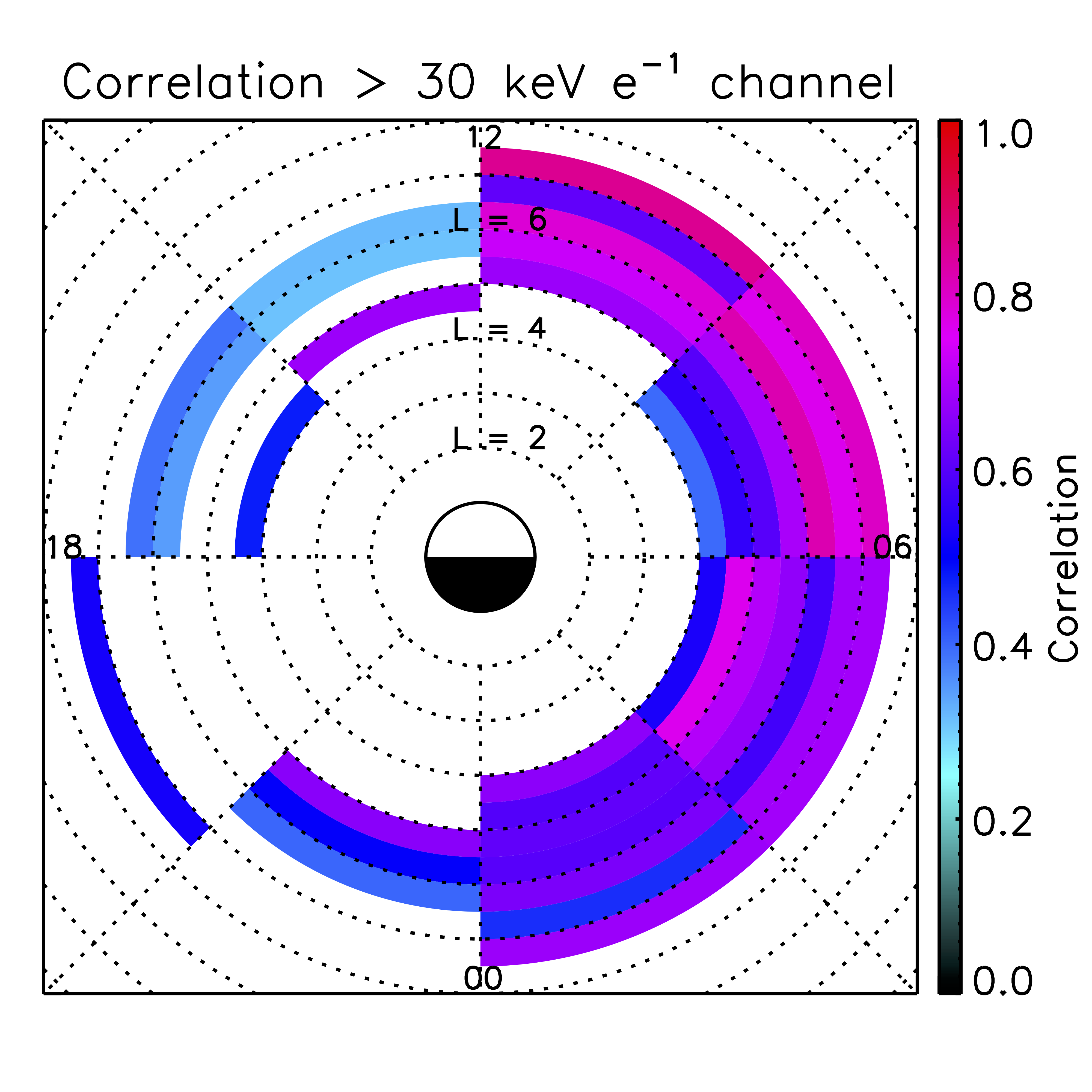MIST
Magnetosphere, Ionosphere and Solar-Terrestrial
Comparing electron precipitation fluxes calculated from pitch angle diffusion coefficients to LEO satellite observations
By Jade Reidy (British Antarctic Survey)
Trapped radiation belt particles can be pitch angle scattered into the loss cone by resonant wave-particle interactions and atmospheric collisions. This high-energy electron input into our atmosphere can affect the atmospheric chemistry and is a significant loss mechanism of particles from the radiation belts, which themselves pose a threat to satellites. Reidy et al (2021) calculates the precipitating flux that would be measured inside the field of view of an electron detector on board a low earth orbiting satellite (POES) using wave particle theory and compares to in-situ data. These calculations depend on diffusion coefficients for whistler mode chorus waves, plasmaspheric hiss waves and atmospheric collisions. The diffusion coefficients used in Reidy et al (2021) were derived for use in the British Antarctic Survey Radiation Belt Model (BAS-RBM). The analysis presented in this paper is a direct test of the how well the diffusion coefficients used in the BAS‐RBM are able to quantify the precipitating flux and therefore a first step toward testing the loss due to precipitation within the BAS‐RBM itself.
Figure 1 shows a global plot of the linear correlation between the calculated precipitating flux and that measured by the POES T0 >30 keV electron channel between 26–30 March 2013. Our results show the best correlation on the dawnside for L* > 5; this agreement is consistent with chorus waves being the dominant scattering mechanism in this MLT and L-shell zone, suggesting that chorus-driven scattering is well represented in the BAS-RBM. However, we consistently underestimate the precipitating flux on the duskside, suggesting we are likely missing some diffusion here; potential causes of this underestimate are discussed in the paper. Reidy et al (2021) also demonstrates the potential of using wave particle theory to reconstruct the total precipitating flux over the entire loss cone, some of which is missed by the POES detector due to its limited field of view, finding that the total precipitating flux can exceed that measured by POES by a factor of 10.

Figure 1: Linear correlation coefficient between calculated and measured precipitating flux in bins of 3 hour MLT and 0.5 L*, where noon is to the top and dawn to the right. The correlation is only shown where the confidence level is over 95%.
Please see the paper for full details:
, , , , , , et al. (2021). Comparing electron precipitation fluxes calculated from pitch angle diffusion coefficients to LEO satellite observations. Journal of Geophysical Research: Space Physics, 126, e2020JA028410. https://doi.org/10.1029/2020JA028410